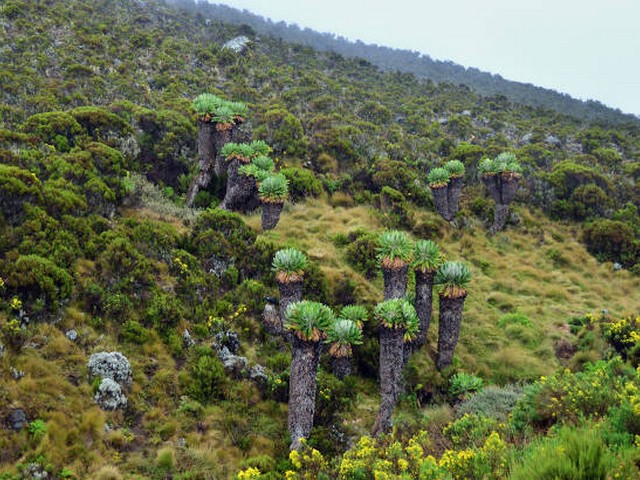What To Expect From Kilimanjaro’s Wildlife: A Journey Through Nature’s Marvels
Introduction: Unveiling Nature’s Masterpiece
Mount Kilimanjaro, the towering sentinel of Tanzania, is not just the highest peak in Africa but also a magnificent bastion of diverse ecosystems and enchanting wildlife. As you plan your ascent with the Kilimanjaro Centre for Trekking and Ecotourism (KCTE), prepare to immerse yourself in more than just a climb; it’s an exploration into the heart of Africa’s wildlife. Here, every step brings you closer to understanding the delicate symphony of nature where each creature, big and small, plays a vital role.
The Enchanting Habitats of Kilimanjaro
The Lower Slopes: A Welcome by the Wild
As your trek begins, the lower slopes of Kilimanjaro welcome you with lush montane forests. Amidst the dense foliage, the playful calls of the Colobus monkeys echo, their long white tails flicking through the ancient trees. Here, the air is filled with the chirping of numerous birds like the Hartlaub’s Turaco and the Kilimanjaro White-eye, exclusive to these parts of the world.
The Heath and Moorland: Where Giants Roam
Ascending further, the landscape transforms into heath and moorland. This zone introduces trekkers to some of Kilimanjaro’s most iconic residents—the majestic elephants. Witness these gentle giants, draped in the mist, foraging through the underbrush, a sight that captures the essence of wild Africa. This area is also home to the elusive leopard, although a glimpse of this solitary predator is a rare and treasured moment.
The Alpine Desert: Survival of the Fittest
In the stark beauty of the alpine desert, life thrives against the odds. Here, the Kilimanjaro shrew, a small but resilient creature, has adapted to the harsh conditions. The sparse vegetation hosts hardy species like the lobelia and senecio plants, which stand as sentinels over this lunar-like landscape.
The Summit: The Frozen Kingdom
Reaching the summit zone, the realm of ice and cold, might seem devoid of life at first glance. But even here, nature surprises. The hardy four-striped mouse maneuvers through the rocks, its presence a testament to life’s persistence. The summit’s fleeting warmth during daylight hours coaxes insects out of their icy hideouts, providing food for birds that dare to soar at these heights.
Wildlife Encounters: What to Expect
Close Encounters of the Furry Kind
While the wildlife on Kilimanjaro might not be as densely populated as in the Serengeti, the species here have adapted intriguingly to the mountain’s unique environment. The chance to see buffaloes, bushbucks, and blue monkeys on your climb adds a thrilling dimension to the trekking experience.
The Birdwatcher’s Paradise
For ornithologists and bird enthusiasts, Kilimanjaro is a feathered treasure. The mountain hosts over 179 bird species that range from the common, such as the Alpine Chat, to the rare Abbott’s Starling. The diversity in avifauna increases the ecological richness of Kilimanjaro, making every bird sighting a delightful event.
Nocturnal Life: The Unseen Treasures
At night, Kilimanjaro transforms into a different world. As you camp under the starlit African sky, you might hear the distant cry of a nightjar or the rustle of a honey badger. These nocturnal creatures often stay hidden during the day, so keeping an ear out after dusk is essential for those interested in the full spectrum of the mountain’s wildlife.
Preserving Kilimanjaro’s Wildlife: A Collective Responsibility
Conservation efforts are crucial in maintaining the natural habitat of Kilimanjaro’s diverse species. At KCTE, we are committed to eco-friendly practices that minimize the impact of trekking on the environment. By choosing to climb with us, you also contribute to the preservation of this majestic mountain’s ecological balance.
Why Climb with Kilimanjaro Centre for Trekking and Ecotourism – KCTE?
Choosing KCTE means opting for a journey that is carefully curated to offer more than just climbing. Our experienced guides are not only skilled in leading you to the summit but are also knowledgeable about the wildlife and ecological subtleties of the mountain. With KCTE, your climb becomes a journey of discovery, where learning and experience go hand in hand.
FAQ: Enhance Your Kilimanjaro Wildlife Experience
What is the best time to see wildlife on Kilimanjaro?
The best time to witness wildlife is during the dry seasons, from late June to October and from January to early March. These periods offer clearer skies and more accessible trekking conditions.
Are there any safety concerns with wildlife during the trek?
While encounters with large wildlife are rare, safety is our top priority at KCTE. Our guides are trained to handle wildlife encounters professionally, ensuring your safety throughout the trek.
Can I take photographs of the wildlife?
Absolutely! Photographing wildlife is encouraged, but we advocate for a respectful distance to avoid disturbing the natural behavior of the animals.
How does KCTE contribute to wildlife conservation?
KCTE is actively involved in conservation initiatives and educates trekkers on sustainable practices. A portion of our proceeds goes towards conservation projects on and around Kilimanjaro.
Conclusion: A Call to the Wild
The wildlife of Kilimanjaro offers more than just a backdrop for your trek; it is a vibrant part of the mountain’s soul. As you plan your climb with KCTE, remember that this adventure is a chance to connect with nature in one of its most raw and beautiful forms. Join us at the Kilimanjaro Centre for Trekking and Ecotourism, and be part of a journey that respects, cherishes, and celebrates the wild spirits of Kilimanjaro.
Ready to embark on a life-changing adventure where the air is crisp, the landscapes are stunning, and the wildlife encounters leave you in awe? Book your Kilimanjaro climb with KCTE today, and take the first step towards a trek that you will remember forever!




